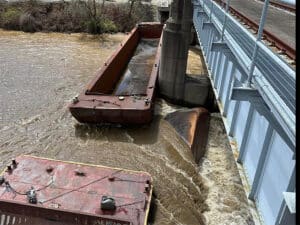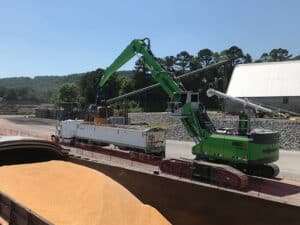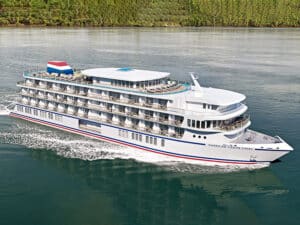
Low water on the Mississippi River slows critical freight flows
Written by Marine Log Staff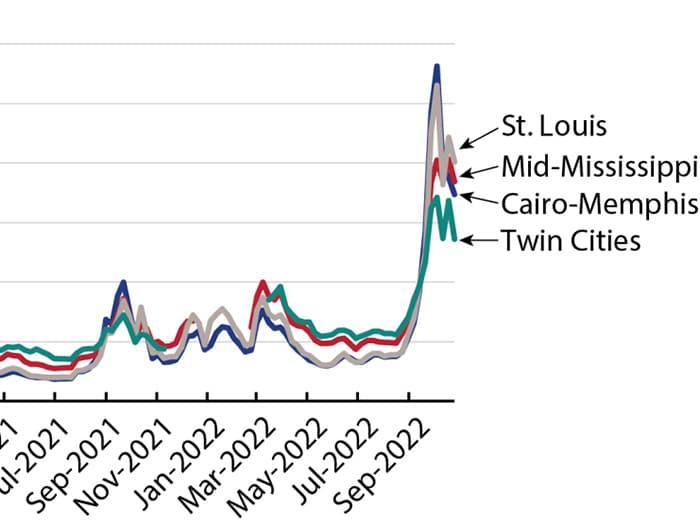
One result of low water levels has been to send barge freight rates soaring
In an update on Mississippi freight shipments, the U.S. Bureau of Transportation Statistics (BTS) says that “currently, low water levels in the Lower Mississippi River due to scant rainfall have severely hampered fall 2022 barge shipments, especially on the vital stretch between Cairo, Ill., and Memphis, Tenn.”
The BTS notes that in 2020 the Mississippi River carried more than half of the 165.5 million tons that moved between the 12 states touching the Upper Mississippi System and Louisiana. The percentage of freight carried by the river to Louisiana is much higher for some states: 92% for Indiana, 81% for Missouri, 80% for Illinois, and 75% for Kentucky.
Today, that flow of freight has been hampered by low water levels on the Lower Mississippi River.
Groundings and the need for dredging have closed sections of the river and halted barge movements for intermittent periods. U.S. Coast Guard District 8 (New Orleans) reported a backup of more than 2,000 barges on the Lower Mississippi in early October. Low water also restricts the loads each barge can carry, and the narrower channel restricts the number of barges in a single tow.
Rain from Hurricane Roselyn eased the problem slightly in late October, but long-term weather forecasts do not anticipate enough rain to restore full river operations for at least several months.
Rail shipment is the normal alternative to barges, but the rail system can have difficulty absorbing such a massive short-term shift. Moreover, concerns over a possible rail strike in 2022 have made shippers hesitant to rely on a rail option.
SHIPMENT OF SEASONAL PRODUCTS CANNOT AFFORD TO WAIT.
Many major barge commodities such as coal, chemicals, and petroleum move at similar volumes year-round. Grain and other farm products, however, are seasonal. In 2022, downbound (southbound) grain shipments from the Upper Mississippi through Lock 27, the southernmost lock on the river, have followed the 2021 pattern through October, but many of those shipments have been stalled or delayed on the Lower River.
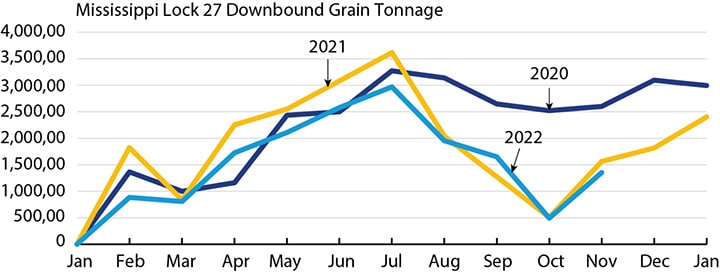
Unfortunately, the low water has coincided with the peak shipping season for U.S. corn and soybeans, America’s largest export crops. The October downbound grain and ag product shipments on the Lower Mississippi below Lock and Dam 27 were predominately soybeans and corn, leaving those major export commodities most vulnerable to the Lower River disruption.
The implications are apparent in barge shipping rates. By early September, barge rates were already at record highs. Downbound grain rates on the Mississippi in October 2022 rose to more than double the 2021 peak and remained very high in early November.
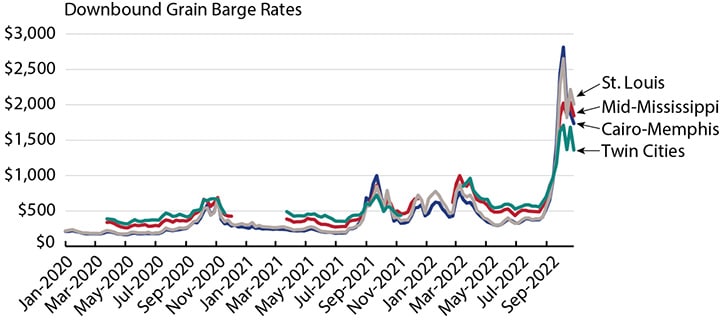
Freight shipped on the Mississippi River had already been affected by world events, notes BTS.
“World demand and prices for grain have been rising due to Russia’s invasion of Ukraine, drought in other producing areas, and increased consumption in China and elsewhere. Yet, despite the demand, U.S. grain and soybean exports are down due in part to the higher U.S. dollar and in part to the delivery delays caused by the compounded impact of low water and disruption to the supply chain. While domestic grain prices remain low, bid prices for U.S. export corn peaked in mid-October as the river delays were at their worst.”
The Soy Transportation Coalition estimates that barge transportation accounts for about 6% of the delivered cost for soybeans shipped from Davenport, Iowa, to Shanghai. October barge rates were as much as 400% above average, which would raise the delivered price of soybeans by about 24%, placing U.S. producers at a cost disadvantage compared to those in Brazil and other competitors
Grain is not the only commodity affected. The Waterways Council noted that the low water has also delayed coal shipments that are “very much needed in Europe” due to the invasion of Ukraine.
Besides delaying loaded downbound barge tows moving from producing areas to destination ports such as Memphis, South Louisiana, and New Orleans, the low water also delays upbound tows moving fertilizer and cement for spring planting and construction, which also cuts the supply of empty barges for subsequent downbound trips.


